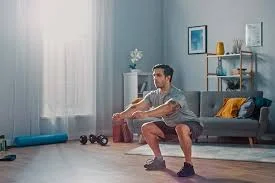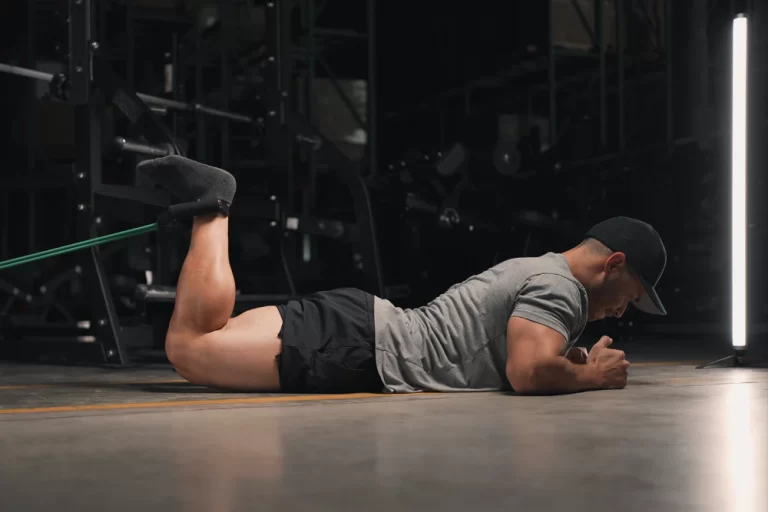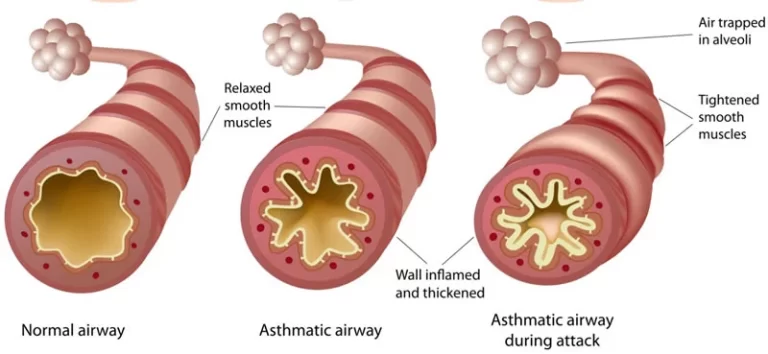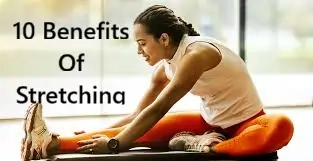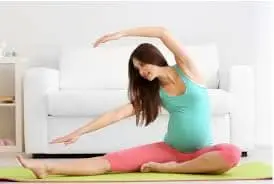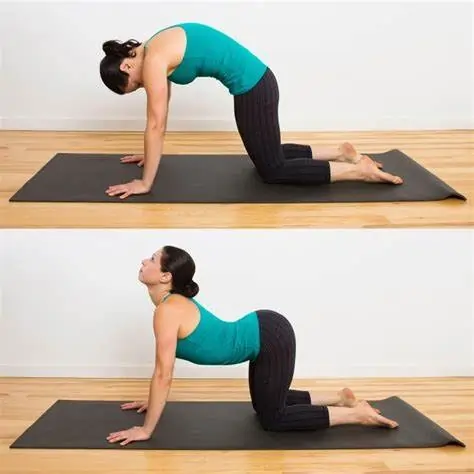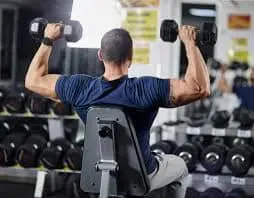21 Best Quadriceps Exercises
Overview
- Quadriceps exercises help to relieve knee pain, keep muscles strong and flexible, and improve function following an injury.
- Exercises for quadriceps muscles are classified into two types: stretching and strengthening exercises.
- People can do a variety of exercises to strengthen and condition their quadriceps. However, before exercising, it is recommended that you perform a quick warm-up and stretch to help increase blood flow to the area.
- For the quadriceps, do 5 to 10 minutes of walking followed by a standing quadricep stretch and a prone squad stretch. This stretch entails bending the knee and bringing the heel towards the buttocks. A person then grabs their ankle, gently pulls it closer to their body, and holds it for 30 to 60 seconds.
Quadriceps Muscle Anatomy
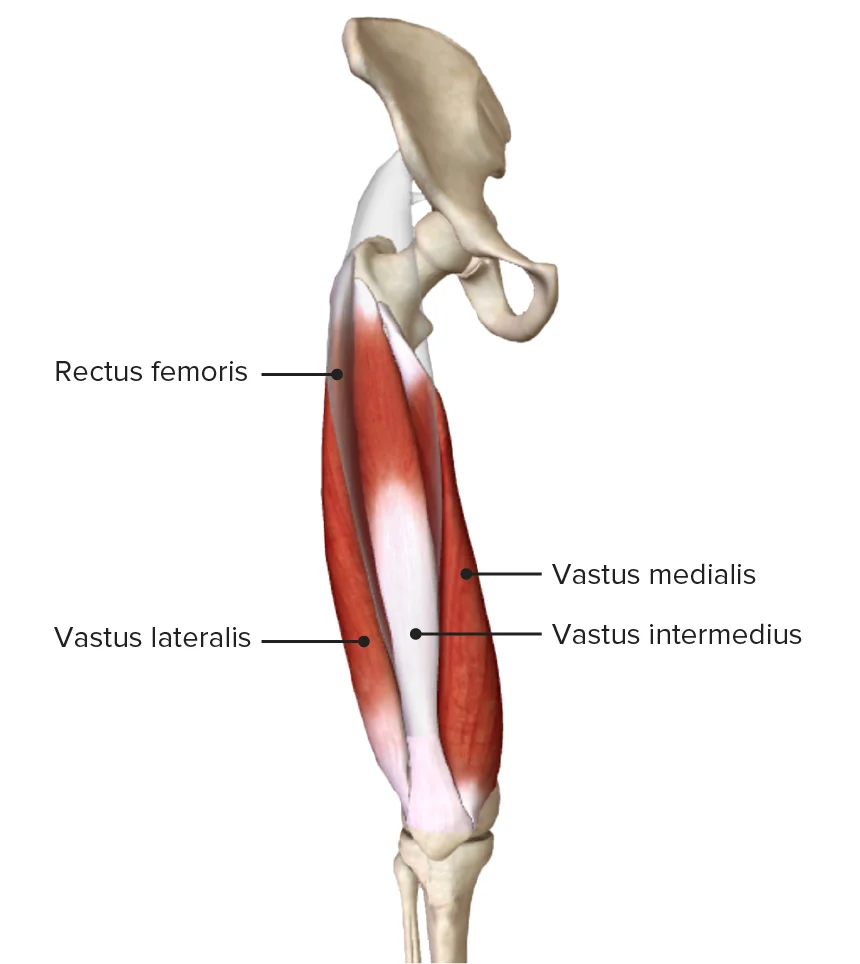
The quadriceps muscle, also known as the quadriceps femoris or knee extensor, is a large muscle group that covers the front of the thigh and is one of the four muscle groups that make up the lower limb’s strongest muscle.
It is the knee’s super extensor muscle, which forms a bulky fleshy mass at the front and sides of the femur.
The quadriceps are divided into 4 muscle portions, or ‘heads’:
- Vastus intermediates
- Vastus medialis
- Vastus lateralis
- Rectus femoris
Quadriceps Muscles Origin:
- Rectus Femoris: This muscle is located in the center of the thigh and covers all three other muscles. The Rectus Femoris originated on the Ilium.
- the middle of the thigh, encompassing the majority of the remaining three quadriceps muscles. It originated in the ilium.
- All three are deep to the rectus femoris and originate from the body of the femur, covering the trochanters to the condyles:
- Vastus lateralis appears on the lateral side of the femur.
The Vastus medialis is located on this side of the femur.
The Vastus intermedius is located on the front of the femur, between the vastus lateralis and vastus medialis, and it is deep to the Rectus Femoris. The palpation of this muscle action is difficult.
Muscles Insertion:
- All four quadriceps muscle segments insert into the tibia’s tuberosity, passing through the patella to form the patellar ligament, and then attach to the tibia.
- The articularis genu, a fifth quadriceps muscle, is frequently overlooked.
- Rarely Seen Muscles The Tensor Vastus Intermedius is the sixth muscle in the quadriceps group.
Nerve Supply:
- The Femoral nerve innervates the quadriceps muscle (L 2, 3, 4).
Blood Supply:
- Lateral femoral circumflex artery.
Muscles Action:
- The four quadriceps are strong extensors of the knee. They are essential in everyday activities such as walking, running, jumping, and squatting.
- Rectus Femoris is a hip flexor that works alongside other hip flexors. This action is also important in walking or running because it swings the leg forward into the next step.
- The vastus medialis supports the patella and knee joint during gait.
- This muscle is extremely important because it is frequently and heavily used in daily activities. Quadriceps, physical therapist, and orthopedists prioritize their rehabilitation programs to train and develop quadriceps as early as possible.
This muscle requires regular attention to exercise and lengthen properly – to walk, stand, and live a healthy lifestyle.
Muscle Fibers
As the femoral quadriceps muscle descends deeper, more aerobic fibers replace the superficial anaerobic fibers. The white fibers will activate after the red fibers have activated; the initial fibers are less vascularized than the oxidative fibers. During a contraction, the underlying fibers will deoxygenate more slowly.
Men have higher levels of contractile strength and speed than women, most likely due to hormonal variations and male muscle mass. Testosterone increases the electrical impulse speeding up the motor unit, boosts the amount and rate of calcium release into the fibers (more quick contraction), and speeds up the healing and hypertrophic response. Men have more white fibers.
Health advantages of performing a quadriceps exercise.
- Regular quadriceps strengthening exercises can make it easier to extend the knee and flex your hip.
- Helps to strengthen the quadriceps muscles
- Helps to improve the stability of the kneecap.
- Helps to increase the jump height.
- Helps to improve the overall athletic ability.
- Helps to decrease the risk of developing knee OA
- Helps to improve balance & stability.
- Walking, bending, sitting, and running are all easier when your quadriceps are strong.
Advantages of Strong Quadriceps Muscles
- Walking, running, and ascending the stairs are all made achievable by the quadriceps, which play a role in hip extension.
- The vastus medialis, as well as vastus lateralis, collaborate to keep the kneecap stable and properly aligned.
- Strengthening the anterior thigh muscles can help prevent or treat conditions associated with weak quadriceps, such as patellofemoral stress condition, IT band friction syndrome, as well as patellar tendonitis.
- Increasing power: Stronger, larger thighs result in more powerful fitness performance. The stronger your quads are, the faster you can sprint, squat farther and heavier, balance better, as well as increase your plyometric power.
- Improving aesthetics: There’s no need to go into detail about this, but muscular legs are aesthetically pleasing.
Quadriceps Muscle Training Variables:
- When targeting the quadriceps, several key variables should be considered, including load position, body position, stability levels, and equipment options.
- Load positioning: Changing the position of your weight loads is a simple way to highlight the quads, specifically different muscles within the quad group. While a barbell back squat is great for the quads, converting it to a low-bar squat, in which the bar lies lower down, across the shoulder blades, engages the rectus femoris more than putting the barbell on top of the shoulders. Moving the barbell to the front of the body adds more work to the quads, resulting in muscle hypertrophy.
- Keep this idea in mind as you work through your quad exercises, because changes in weight placement, such as keeping the kettlebell near to the chest in the goblet squat, can help put more emphasis on the front thigh muscles.
- Body Positioning: First and foremost, proper body positioning is a training variable that prioritizes safety. If your hips, knees, and feet are not properly aligned, you are likely to sustain an injury. Furthermore, tweaks can alter your form sufficiently to improve the growth of your target muscles – in this case, the quads. Adjust your feet on the platform. A simple way to target the quadriceps more is to lean forward slightly while maintaining a neutral spine and upright trunk, so that more of your body weight is concentrated in the front of the body, putting more strain on the quads. Another technique is to elevate the heels during squats and lunges, which allows the torso to remain upright while shifting stress to the quadriceps group. Another example is the leg press. Adjusting your feet on the platform allows you to target two different quad muscles, the glutes, and the entire lower body.
- Stability levels: Make sure your quadriceps routine consists of moves that require both more and less stability. Machine-based exercises provide more stability, allowing you to increase the weights and work out your quads. However, fewer stabile exercises promote muscle hypertrophy by making the muscles work harder to maintain balance. That’s excellent news for exhausting them.
- Equipment: A quad-focused workout can include bodyweight, dumbbells, kettlebells, barbells, and machines. When it comes to quadriceps training, dumbbells offer an endless number of options. You can use one or two, keep them by your sides or on your shoulders, or position one in front of your chest. Machines allow you to use heavier weights more safely because of the additional stability they provide. Barbells allow you to perform both back and front squats, which are essential for developing the front thigh muscles. And some leg exercises (we’re looking at you, sissy squat) are simply too difficult, implying that your body weight will be sufficient to ensure hypertrophy.
Quadriceps muscle Stretching exercise:
- Quadriceps stretching is an excellent exercise for increasing the flexibility of the thigh muscles. These exercises are simple to perform at home and have numerous benefits.
- Quad stretches can be used as a warm-up before and after a lower-body workout, cardio session, yoga practice, or another wellness activity.
- The best quad stretches work the muscles and increase blood flow to the area.
It also alleviates quadriceps muscle tightness. - A good stretch prepares the muscle for a variety of physical activities, including running, brisk walking, squatting, yoga, and other sports.
- Quad stretching exercises improve short-term range of motion, including hip flexion and knee extension.
- This stretch helps you avoid injuries during leg workouts.
- It improves long-term flexibility and mobility.
- It reduces muscle soreness.
Best Stretching exercise for Quadriceps muscles:
- Standing quadriceps stretch
- Prone quadriceps stretch
- side lying quadriceps stretch
- Half-kneeling quad stretch
- Couch stretch
- Heel sitting quads stretch
- Foam roll the quadriceps
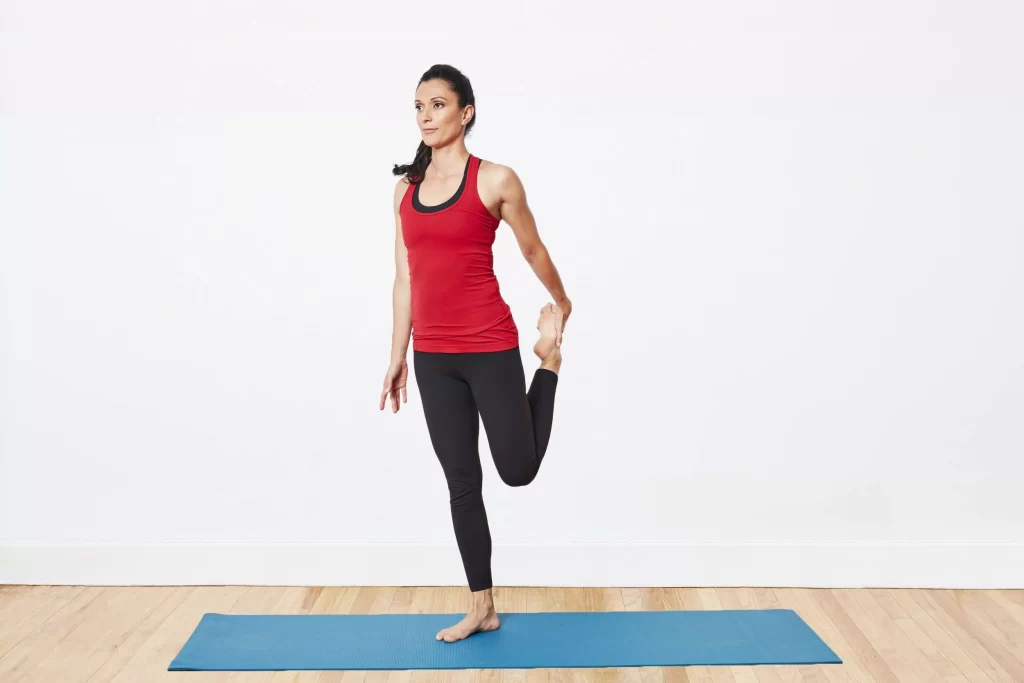
1. Standing quadriceps stretch
This simple exercise is ideal for a quick quad stretch that doesn’t require any equipment or lying down, such as before going for a run. Because it is so simple, this is the best exercise for stretching your quads several times per day. You could get up and start right now!
How To Do It:
- Stand about your feet together and your arms at your sides. Maintain a good, upright posture. Bend your knees just for balance.
- Shift your weight to one foot and bend your leg behind you. Reach back and hold the top of your ankle in one or both hands.
- Keep your shoulders down & back, and look straight ahead.
- Gently pull your foot towards your buttocks to lengthen and stretch your quads. Keep your thighs together throughout.
- Hold for 20 to 60 seconds, increasing the stretch as your muscles relax and lengthen.
Pro tip: Pushing your hips forward will provide a deeper quad stretch. This strikes the rectus femoris a little more. If you are having difficulty maintaining your balance, lean against a wall.
2. Prone quadriceps stretch
Stretching the quadriceps while standing is convenient, but it may not be the best exercise for a long stretch, such as 60 seconds or more. That’s where the stretch comes in! The prone quad stretch is extremely comfortable and ensures that your hips and knees are properly aligned.
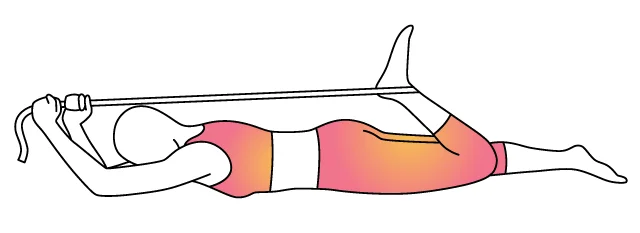
How To Do It:
- Lie flat on the floor, legs straight, head resting on folded arms.
- Bend your left leg, then reach back with your left arm to hold your ankle.
- Gently pull your foot toward your buttocks, being careful not to raise your shoulders or twist your back. Your thigh should stay in contact with the floor.
- Hold the position for 20-60 seconds or out more, increasing the stretch as you feel the muscles relax and lengthen.
- Release your foot, switch sides, and repeat.
Pro tip: If you struggle to reach your foot without straining, use a yoga strap to “lengthen” your arms. Loop the strap around your foot and grip it so you don’t have to reach too far back.
3. Side lying quadriceps stretch
Some people find lying on their front uncomfortable, particularly if they are overweight, pregnant, or have a sore lower back. Some people may find the side-lying quad stretch easier to do. As an added benefit, you will still be able to see what is going on around you

.How to do It:
- Lie on your side, hips stacked, shoulders squared, and legs together. Rest your head on your arm.
- Bend your upper leg and reach back for your ankle.
- Gently pull your foot into your buttocks.
- Hold the position for 20-60 seconds or more about it, increasing the stretch until you feel your muscles relax as well as lengthen.
- Release your foot from the ground, roll over, switch sides, and repeat.
Pro tip: To increase the stretch, slightly push your top hip forward. This focuses more on the rectus femoris muscle.
4. Half-kneeling quad stretch
Most quadriceps stretches are performed with the knees together. While this is beneficial to joint health, it is not as effective for targeting the rectus femoris. The half-kneeling quads stretch lengthens your hip, giving the rectus femoris a more intense stretch. However, this is a more strenuous exercise and may be difficult if you have limited flexibility.
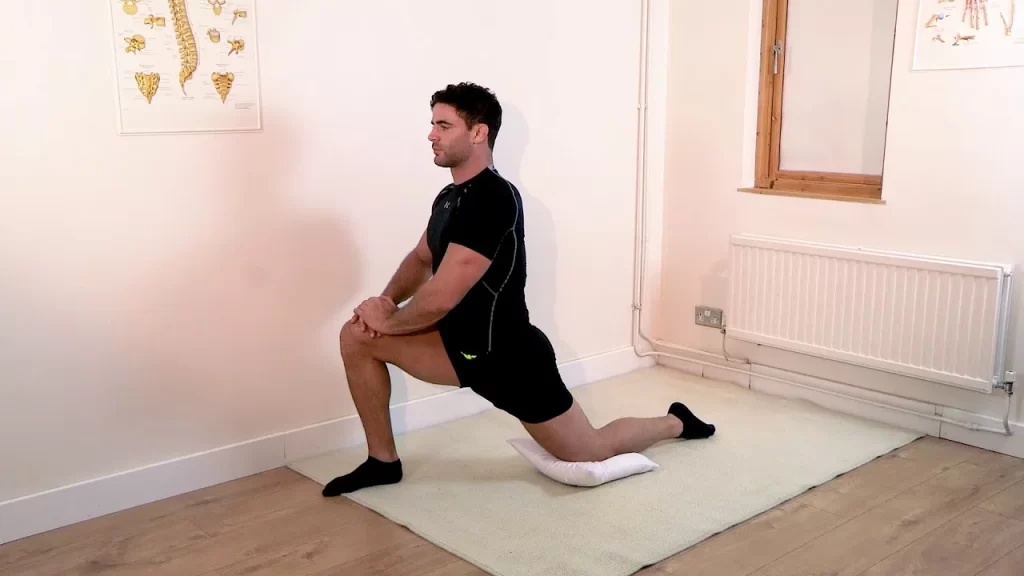
How To Do It:
- Take a half-kneeling position, with one foot flat on the floor in front of you and the opposite knee about two feet behind.
- Bend your back leg, grab your ankle, and pull it into your buttocks. Maintain an upright posture, do not twist your hips or shoulders, and avoid hyperextending your lumbar spine.
- Hold the position for 20-60 seconds and more, increasing the stretch until you feel your muscles relax and lengthen.
- Release your foot, switch sides, and repeat.
Pro Tips: To increase comfort, place your knee on a folded towel or a foam pad. If you struggle to reach your foot without straining, use a yoga strap to “lengthen” your arms. Loop the strap around your foot and grip it so you don’t have to reach back as far.
5. Couch stretch
The couch stretch is slightly more comfortable than the half-kneeling quad stretch. This exercise involves placing your foot on a couch, bench, or low chair rather than reaching back and holding your ankle. You can also press your hips backward to achieve a deeper stretch. Of course, this exercise requires a couch, so it may not always be practical.
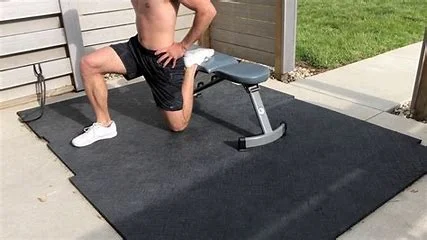
How To Do It:
- Assume a half-kneeling position in front of a low couch. Bend one leg and rest the top of your foot on the seat behind you.
- Keep your torso upright and shuffle backward, pushing your buttocks toward your foot.
- Hold the position for 20-60 seconds or more, increasing the stretch as you feel your muscles calm down and lengthen.
- Release your foot, switch sides, and repeat.
Pro tip: To make this stretch more intense, place your back foot against a wall. This will result in a much deeper stretch for your quads, hips, and ankles.
6. Heel sitting quads stretch
Before the invention of chairs, sitting on your heels was a common rest and work position. While some cultures still practice heel sitting, most people in the Western world have lost the ability to perform this fundamental movement. That’s unfortunate because heel sitting is an excellent way to stretch your quadriceps and mobilize your knees.
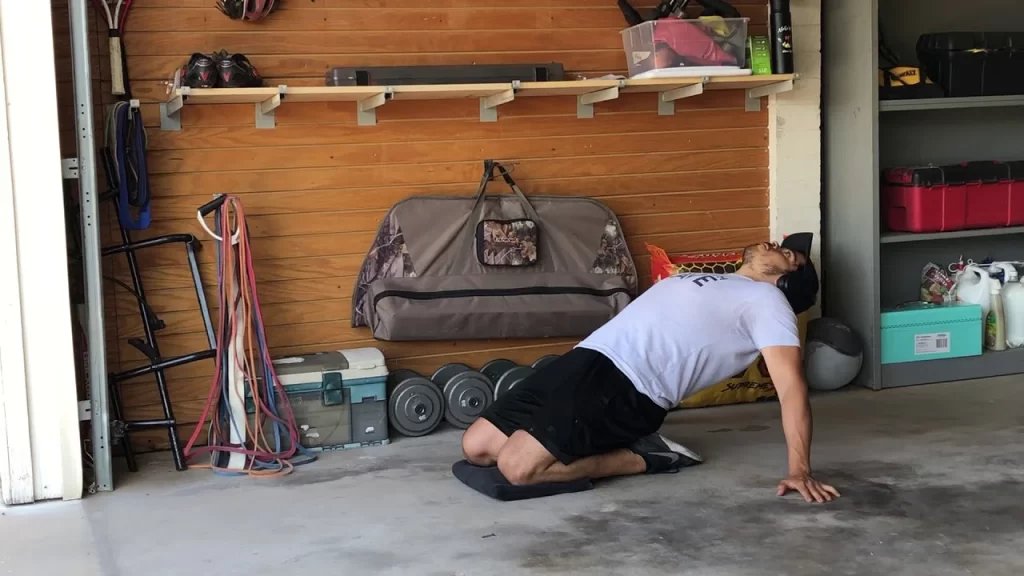
How To Do It:
Kneel with your knees about hip-width apart and your lower legs roughly parallel.
Relax your hips and rest your hamstrings on your calves.
Relax and let your buttocks sink to your heels.
Maintain an upright posture with a relaxed upper body throughout.
Hold the position for 20-60 seconds or further, increasing the stretch until you feel your muscles relax as well as lengthen.
If sitting on your heels is uncomfortable, place a yoga block or folded pillow behind you and sit on it. This will prevent you from having to stretch so deeply. Once you’re comfortable with heel sitting, remove the block.
Pro Tips: Placing yoga blocks or a rolled exercise mat under your feet will help you increase your flexibility. You can also achieve a deeper stretch by leaning your torso backward and supporting your weight with your hands on the floor just behind your feet.
7. Foam roll the quadriceps
Your muscles are covered by a thin layer of fibrous tissue known as fascia. The fascia separates and connects each muscle to its neighbor. The fascia can become “gummed up,” resulting in tight, painful muscles. This can lead to trigger points, decreased blood flow, and reduced function.
Foam rolling is a type of self-massage known as self-myofascial release, which can help loosen your fascia and restore normal movement and function. Foam rolling your quadriceps improves knee and hip joint mobility and performance.
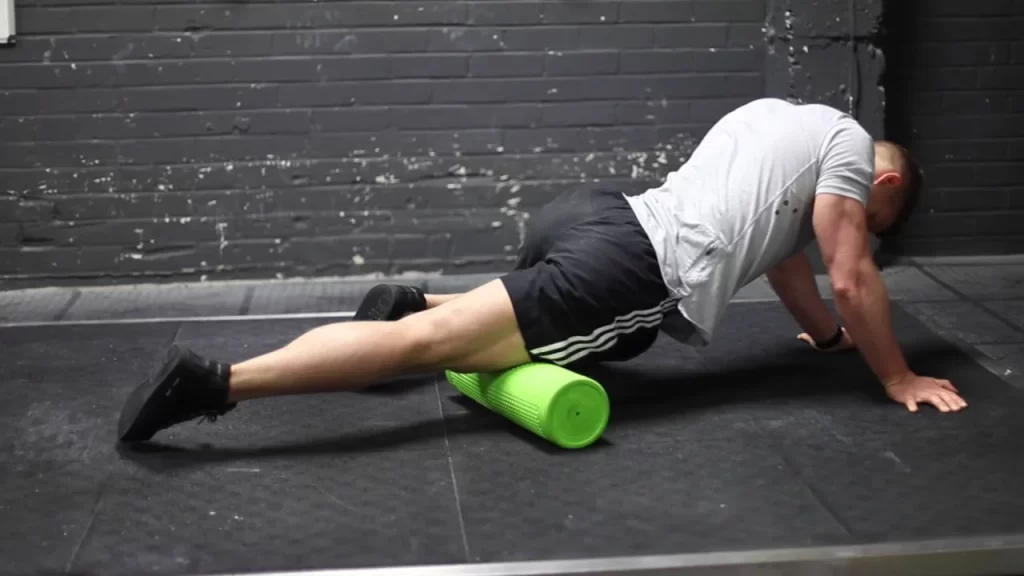
How To Do It:
- Lie on your front on the foam roller. The roller must be placed underneath your thighs.
- Shift your weight across to focus on one leg at a time. Bend the knee on the leg you intend to work on.
- Roll back and forth along your thigh, turning your leg in and out to target all four quadriceps.
- Seek out any areas of tightness and work on them for a little longer until they begin to diminish.
- Apply more pressure by crossing your other leg over the one you’re treating.
- Continue for 2-4 minutes, then switch sides.
Pro Tip: Foam rolling can cause pain. However, as the adhesions begin to dissolve, subsequent foam rolling sessions should become less uncomfortable. unneceIncreasing the pressure gradually to avoid unnecessary pain.
Quadriceps muscle Strengening exercise:
- Barbell Back Squat
- Front Squat
- Hack Squat
- Split Squat
- Bulgarian Split Squat.
- Forward Lunge
- Close Stance
- Single-Leg Leg Press
- Leg Extension Machine
- Step Ups
- Goblet Squats
- Box jumps or jump squats
- Wall Sit
- Straight leg raise
1. Barbell Back Squat
This move targets three of the quadriceps’ four muscles: the vastus lateralis, vastus medialis, and vastus intermedius. This tutorial demonstrates how to perform a high bar back squat, but there is also a low bar back squat option. In the low-bar squat, the bar is placed across the shoulder blades. While research has found few differences in quad activity between the two bar positions, one study discovered that the rectus femoris, vastus lateralis, as well as vastus medialis. Switching up the bar position is an excellent way to engage the rectus femoris in this exercise.
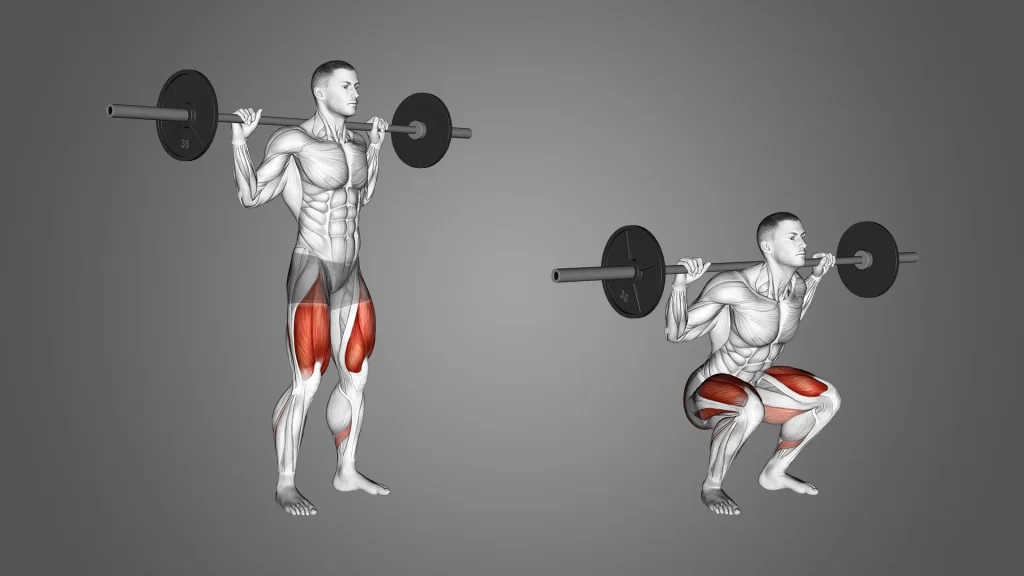
How To:
- Remove the bar from the rack by resting it on the back of the top of the shoulders. Taking a few steps back, position your feet shoulder-width apart, toes pointing forward or out slightly.
- The spine remains straight, the chest stays upright, and the shoulder blades retract. Look forward.
- Flex your hips and knees to sit back. Continue lowering until the hip crease is beneath the knee. Maintain weight distribution in the heels and knees in line with the toes.
- As you push upward, straighten your knees and hips at the same time to return to standing.
- Take a deep breath, then repeat.
- Rep range: 3-5 sets of 8-12 reps each.
2. Front squat
The front squats form is similar to the back squats, with one major difference. The bar is located in front of the chest, rather than behind the neck. The bar adjustment emphasizes the quadriceps muscles, which are all activated. When comparing back and front squats, researchers discovered that holding the bar in front activates the vastus medialis and vastus lateralis more.
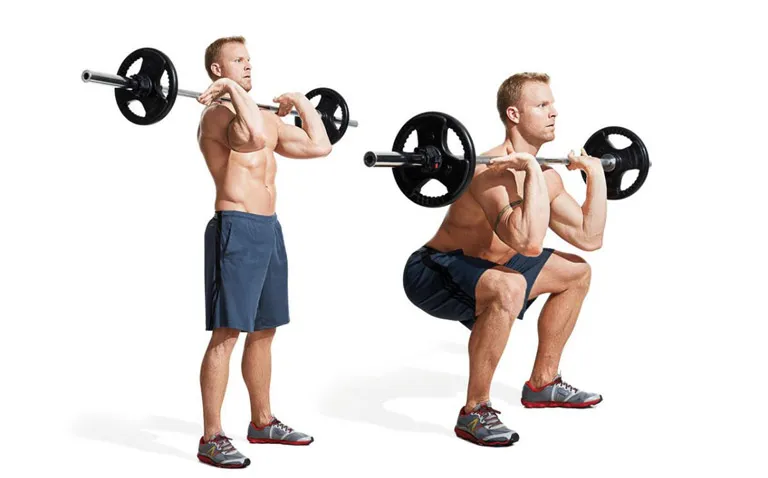
How To:
- Grab the bar with your palms facing up and your elbows pointed forward, shoulder-width apart. Step back as you lift the bar from the rack.
- Position the feet slightly wider than shoulder width, with the toes pointing forward or slightly out. Keep the spine straight and the trunk upright. Look straight ahead.
- Bend at the hips as well as knees while sitting back. Lower until the hip crease is below the top of your thighs.
- Straighten the hips and knees, then push up to stand.
- Rep range: 3-5 sets of 6-12 reps each.
3. Hack Squat: Quads Leg
The hack squat is a machine exercise that is ideal for beginner lifters, those looking to target their quads, and those with back problems. The machine helps to keep the back stable while moving. While this exercise works all of the quadriceps muscles, the vastus medialis works especially hard. Hello, Teardrop Definition.
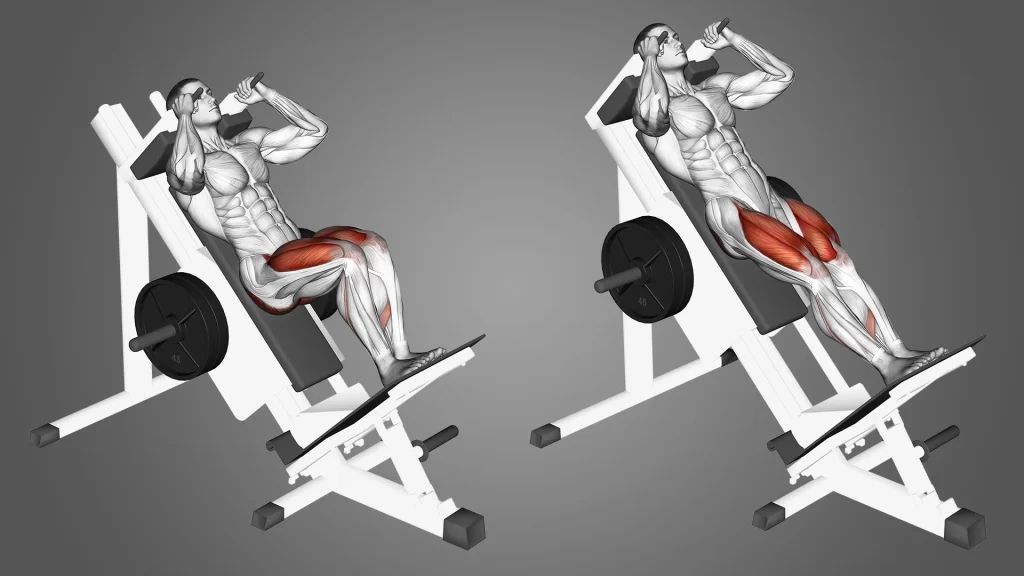
How To:
- Load the machine with your desired weight.
- With your back to the machine, place your feet shoulder-width apart and your shoulders and back against the pads.
- Lower yourself by bending your hips and knees to a 90-degree angle after releasing the safety handles.
- Straighten the hips and knees, then push upward to return to the starting position.
- Rep range: Three sets of 10-12 reps each.
If you don’t have access to a hack squat machine, here are some effective alternatives that target the same muscles.
4. Split Squats
The split squat can be performed with your bodyweight, dumbbells, or a barbell. If you frequently work out at home, consider the split squat an essential part of your quad workouts.

There are several ways to position your body in this exercise to target different lower-body muscles. To emphasize the quadriceps, keep the torso upright and the shin forward during the movement.
How To:
- Hold a dumbbell in each hand, position the barbell on the back tops of the shoulders, or place your hands on your hips. start with standing with your feet aligned with your shoulders.
- The toes point forward, while both heels remain firmly planted on the ground. Keep your torso upright.
- Bend at the knees and lift the back heel off the ground as the weight shifts to the front heel.
- Continue lowering until the back shin, as well as the front thigh, are parallel to the floor.
- Push through the front heel with the front leg to propel the body upwards.
- Rep range: 3-4 sets of 8-12 reps for each leg.
5. Bulgarian Split Squat
isolation exercises for quads.
The Bulgarian split squat is similar to the split squat, except that you elevate the back foot. This change is an excellent progression from the split squat because it tests your balance and stability.vb In this movement, the vastus medialis and rectus femoris are highly active, with the vastus lateralis activating moderately.
How To:
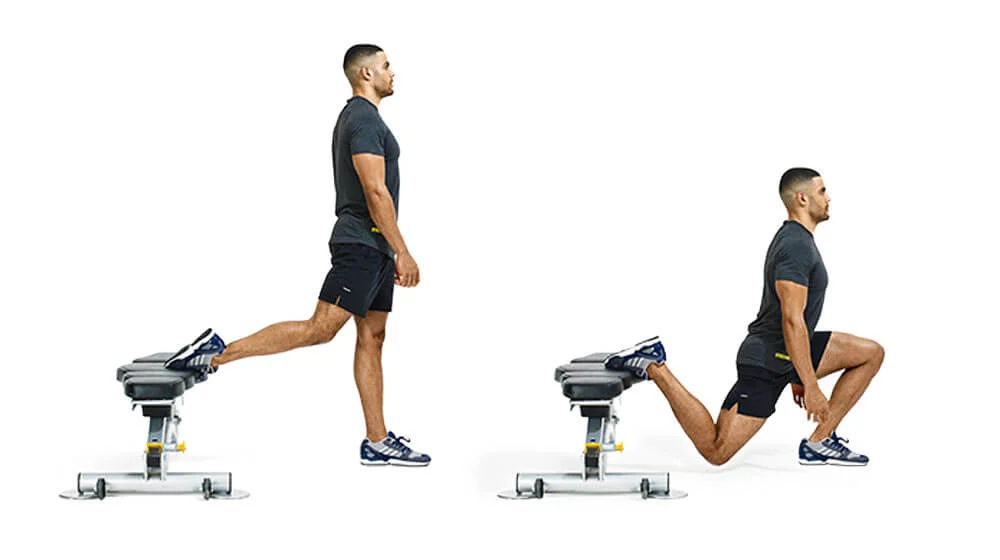
- Stand in front of a stable elevated surface about knee height, such as a bench or chair.
- Keeping your feet hip distance apart, take a wide step forward to form a forward lunge position.
- Elevate the back foot on a stable surface.
- Place the top of your back foot on the bench.
- Alternatively, flex the ankle by placing the toes on the bench and lifting the heel.
- Keep your knees slightly bent.
- Bend the knee while keeping it aligned with the foot until the front thigh is parallel to the ground.
- The hips should hinge slightly forward.
- The chest remains upright; look straight ahead.
- Keep the weight on your front leg.
- Reps: three sets of eight to twelve reps per leg
6. Forward Lunge:
Quad muscle exercises.
The rectus femoris is the primary quadriceps mover in the forward lunge; however, research indicates that the vastus laterals and vastus medialis also contribute significantly.
How To:
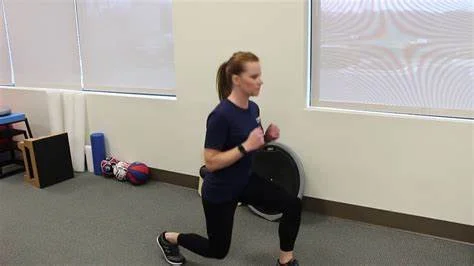
- Stand with your feet hip-width apart and your hands on your hips, or hold a barbell or dumbbell.
- Step forward with the right foot, bending at the knees and lowering the body until they form a 90-degree angle. The chest remains upright.
- The back heel lifts off the ground, transferring the weight to the front leg.
- Push off with the right foot, straightening the knees as the right leg returns to its starting position.
- Reps: three sets of 8-12 reps on each side.
Have you got knee pain? Try these lunge alternatives for bad knees.
7. Close Stance Leg Press
A narrow stance on the leg press works the outer thighs, which activates the vastus lateralis. You can emphasize specific lower-body muscles by adjusting your foot position. Keeping your feet shoulder-width apart targets the entire lower body, whereas a wide stance focuses on the inner thighs. High foot placement targets the glutes and hamstrings while lowering the feet targets the entire quad group. And if you’re concerned that the leg press isn’t as effective as other exercises, we can assure you that it is! When comparing the leg press to the squat, you’ll notice that it provides a lot of great workout value.
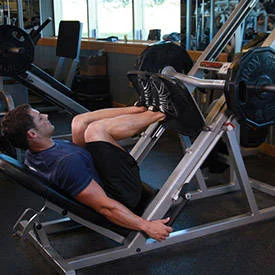
How To:
- Sitting at a leg press machine, place your feet on the first plate, keeping them less than shoulder-width apart.
- The feet should be less than three inches apart, with the toes pointing slightly out. The back stays on the pad at all times.
- Lower the safety bars and push the footplate up away from the torso until the legs are straight.
- Bend the knees to lower the footplate to the torso, then continue until the upper and lower legs form a 90-degree angle.
- Push through the heels of the feet while straightening the knees and returning the platform to its starting position.
- Reps: 3-4 sets of 8-12 repetitions.
8. Single-Leg Press
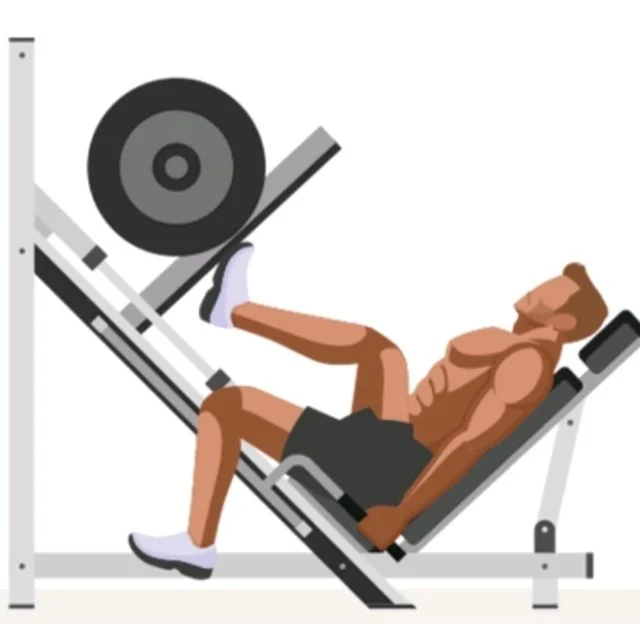
This leg press variation also effectively targets the outer thigh, resulting in strong vastus lateralis activation. Use this quad exercise to determine whether there are muscle imbalances between the two legs.
How To:
- Sitting at a leg press machine, place one foot on the footplate while keeping the other on the floor or straight underneath the platform.
- Press the footplate away from the torso to release the leg press from its locked position.
- Bend at the knee while keeping your working leg straight, lowering the footplate/sled toward your torso until your knee is nearly touching your chest.
- Extend the knee and press the footplate away to return to the starting position. Keep the knee in line with your toes.
9. Leg Extension Machine
Best Quad Exercises
Leg extensions can do nothing wrong. It develops the rectus femoris and vastus intermedius while also affecting the other two vastus leg muscles. Consider doing this followed by some stair climbing to complete your quad workout. Talk about an intense quad workout!

How To:
- Sit on the leg extension machine. Place the legs beneath the pad and adjust it so that it is on top of the shins and above the feet.
- Set the machine to your desired weight. Place your hands on the sidebars.
- Lift the weight by straightening your legs. Keep your back against the backrest.
- Bend the knees to lower the weight back to the starting position.
- These can also be done unilaterally. Work your left leg first, then your right leg.
- Reps: Three sets of eight to twelve reps
No leg extension machine? Here are the best leg extension options.
10. Step Ups
Quad isolation exercises.

If you need a slightly simpler variation of this exercise, leave out the dumbbell and use your body weight. If you want to make it more difficult, use only one dumbbell and hold it in your hand opposite the leg doing the work. This exercise activates all of the quadriceps muscles, but research shows that it focuses the most on the vastus lateralis.
How To:
- Stand near a bench that is just below knee height, holding a pair of dumbbells with your arms extended by your sides.
- Place the right foot on a bench, keeping the hip, knee, and ankle bent 90 degrees.
- Maintain an upright chest with shoulders rotated back, and begin to extend the right knee while driving the body up with the right leg. As you move upward, elevate your left foot.
- You may tap the left foot on the bench before lowering back down upon the right leg, or you can keep it elevated and maintain balance on the right while bending the right knee.
- Tap the left foot to the ground, then quickly raise the body again with the right leg.
11. Goblet Squats
If you’re having trouble with squat form, posture, or flexibility, the goblet squat is your best option. Because you hold the weight in front, the hips open more than in other squats, allowing you to lower between the legs. This move works every quad muscle, but the vastus medialis receives the most attention.
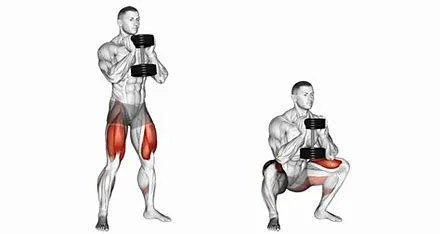
How To:
- Standing with feet slightly wider than shoulder width and toes pointed forward, hold a kettlebell at chest height, elbows tucked into the sides.
- The feet are wider than in other squat variations, and the toes extend slightly outward. close to the chest.
- Retract the shoulder blades. You can also use a dumbbell, held vertically against your chest.
- Bend your knees and sit back in your hips as you lower into a squat. Maintain an upright posture with the chest and back straight.
- The feet remained flat on the floor. Lower as far as you can.
- Push through the heels as you extend your knees and return to s Box jumps or jump squats for strong quads.
12. Box jumps or jump squats
If the box jump is new to you, begin with a shorter box and work your way up to a taller one as you master the move. Because of the high energy required for this exercise, do it at the start of your routine when your legs are fresh. This plyometric move requires the use of all quad muscles, with a special emphasis on the rectus femoris.
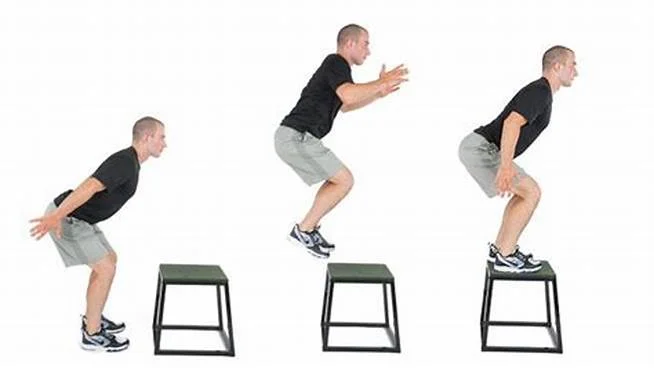
How To:
- Stand facing a box, with your feet about six inches away and hip distance apart. Bend your knees and hips slightly.
- Bend at the knees, pushing the hips back and swinging your arms behind you.
- Push off the balls of your feet and jump into the air, swinging your arms up and forward. To maximize the height of the jump, fully extend the knees and hips.
- Bend the hips and knees at the top of the jump, bringing them forward to land on the box. When landing, bend your knees and hips and position your feet about hip distance apart.
- Step off the box as well as repeat the movement.
Reps: 3-4 sets of five jumps.
13. Wall Sit
If performing this move brings back memories of middle school gym class, you’re not alone. The wall sit is an old but effective technique, especially since it only requires you as well as a stable wall. This move isolates the quadriceps and requires you to hold the position for an extended period, increasing isometric strength and endurance in the lower body muscles.
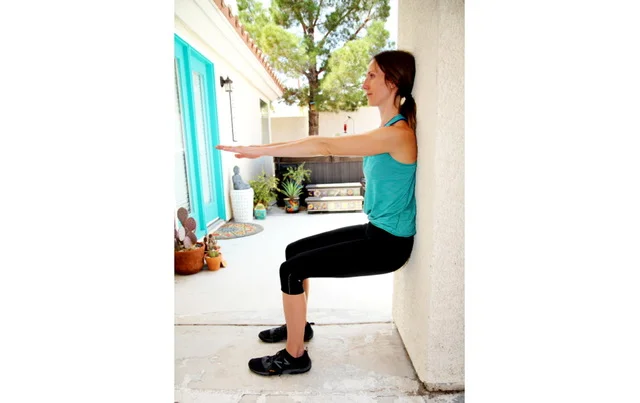
Stand with your back to the wall. Take a step forward until you are two feet from the wall. The feet should be shoulder-width apart.
The shoulders and back should be in contact with the wall. Communicate your core as you gently slide down the wall until your thighs are parallel to the ground. Knees should be above ankles, not toes, so adjust as needed.
Hold your head up and look forward for 20 to 60 seconds.
Slowly return to a standing position.
Do three to five times.
14. Straight leg raise
Don’t be fooled by how simple this exercise is. The straight leg raise is quite challenging. It can be used as part of a lower-body workout or on its own while watching your favorite movie.

Lie on the floor, legs straight and arms at your sides.
Get involved with the quadriceps muscles in your left leg, inhale, and lift the leg to a 45-degree angle while keeping it straight.
Hold for 3-5 seconds.
Exhale and slowly lower your left leg to the starting position.
Repeat ten times before switching to the right leg.
Do two sets on each side.
Summary
- The quadriceps muscles are essential for everyday activities such as walking, running, jumping, and kicking. Quadriceps muscle injuries, such as strains, can prevent you from performing everyday tasks like straightening your knee or bearing weight on your leg.
- Most mild-to-moderate quadriceps pain improves with medical treatment. A serious injury, such as a quadriceps muscle tear, may necessitate surgery to repair.
- Strong quadriceps are essential for maintaining mobility and balance. If you’ve been injured or had surgery, you can use targeted exercises to help rebuild your quads.
- Working to strengthen your quads can also help you move more efficiently and reduce your risk of overuse injury in sports.
- Straight leg raises, short arc quads, wall slides, terminal knee extensions, step-ups, and split squats are all simple yet effective exercises. You may want to consult with a physical therapist to ensure that you are performing the exercises correctly at first.
FAQs
What are the quadriceps muscles area?
The quadriceps femoris, like the sartorius, is one of the anterior muscles of the thigh. It consists of five muscle bellies. The vastus medialis (VM) connects the anatomical neck of the femur with the medial lip of the linea aspera.
Why is it called Quadriceps?
It is the only extensor muscle in the knee, forming a large fleshy mass that covers the front and sides of the femur. The name is derived from the Latin term for the four-headed femoral muscle—Quadriceps femoris, with various muscles in different colors.
Why is quadriceps important?
Function. The quadriceps are primarily used for kicking, jumping, cycling, and running. For example, sports requiring jumps, such as basketball. In everyday life, they assist you in standing up, walking, climbing stairs, and squatting.
Is leg press good for quads?
The leg press focuses primarily on the quadriceps (front thighs) and gluteus maximus (buttocks), the human body’s two largest and strongest muscles. These two muscle groups play an important role in both physical appearance and function. The secondary muscle groups are the hamstrings and calves.
REFERENCES
- Lindberg, S. (2022, September 27). 10 Quad Exercises for Stronger Legs. Verywell Fit. https://www.verywellfit.com/10-quad-exercises-for-stronger-legs-5093857
- Lymphatic Drainage of the Lower Limb – Vessels – Nodes – TeachMeAnatomy. (2022, July 5). TeachMeAnatomy. https://teachmeanatomy.info/lower-limb/vessels/lymphatics/
- Clinic, M. P. (2024, January 30). Quadriceps Muscle: Origin, Insertion, Action, Exercise. Mobile Physiotherapy Clinic. https://mobilephysiotherapyclinic.in/quadriceps-muscle-action-star-muscle-of-our-body/
- Yetman, D. (2023, May 23). 10 At-Home Exercises to Strengthen and Tone Your Quads. Healthline. https://www.healthline.com/health/best-quad-exercises#benefits
- Valand, B. (2022, September 24). Quadriceps muscle exercises – Health Benefits, How to do? Samarpan Physiotherapy Clinic. https://samarpanphysioclinic.com/quadriceps-muscle-exercises/#Health_benefits_of_doing_a_quadriceps_exercise
- Set, S. F. (2024, February 7). 13 Best Quad Exercises for Strength, Size & Definition. SET FOR SET. https://www.setforset.com/blogs/news/quad-exercises
- Inverarity, L. (2023, August 31). 11 Quad-Focused Exercises for Strength and Muscle Building. Verywell Health. https://www.verywellhealth.com/quad-strengthening-exercises-2696617
- Quadriceps Muscle. (n.d.). Physiopedia. https://www.physio-pedia.com/Quadriceps_Muscle

